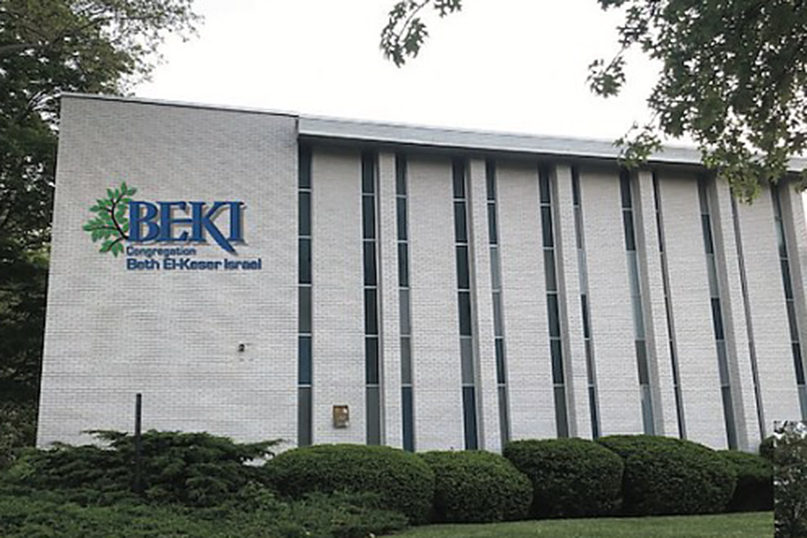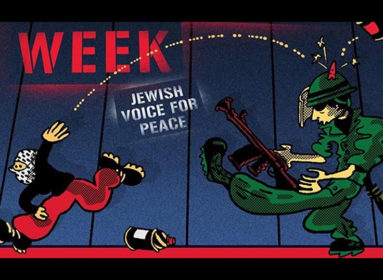
By Allan Appel
And New Haven’s zoning board proclaimed: Let there be light!
Let there be signage!
Let there even be halo-lit, illuminated signage.
Only let it not be 65 square feet. That is forbidden.
That was the three-to-one ruling from on high Tuesday night, Sept. 17, where four Board of Zoning Appeals (BZA) commissioners held court from the elevated wooden dais in the basement government sanctuary at 200 Orange St. in New Haven.
The zoners were holding their regular monthly meeting, at which they denied a request from a Westville synagogue to replace the sign on its street-facing wall with a more visible one, especially at night.
The synagogue, Congregation Beth El-Keser Israel at Whalley Avenue and Harrison Street, sought permission to replace its small black lettered sign. It presented a design with a 65-foot back-lit sign illuminating the name “BEKI,” the acronym by which the synagogue is known in the neighborhood and beyond, and bearing the synagogue’s leafy logo.
The proposed sign would go on a wall of the synagogue facing and set back from Whalley Avenue with a halo-lit illumination that would not reflect on any residences, according to the synagogue’s submission. The wall faces only the Mitchell Branch Library set back from the intersection across the avenue.
BEKI President Yaron Lew said the current sign is small and unrecognizable from the road.
The size of the proposed sign, he added, is commensurate with the size of the facade, and necessary also because of the deep set-back of the building.
The sign proposed is dignified and muted, he declared. It would be a blade – that is, it would not protrude or bother homes or travelers through the neighborhood.
The synagogue needed the variance because the current ordinance allows only a 20-foot sign in an RM zone like the one in which BEKI is located.
The City Plan staff report recommended that the zoners approve the requested variance. But at least four zoning commissioners needed to vote to approve it. And only four of the five commissioners were present Tuesday night. In order to pass, the evening’s vote would have to be unanimous.
BZA Chair Mildred Melendez offered Lew the option to postpone the hearing until next month when five zoners would be present.
Lew decided to go ahead. After he made his presentation, with the assistance of designer Tabitha Kennedy of the Lauretano Sign Group, the commissioners voted one by one.
Melendez and Commissioners Al Paolillo, Sr. and Sarah Locke voted in the affirmative.
In what appeared to be a surprise both to her colleagues, and to the crowded room at 200 Orange, Commissioner Ann Stone rejected all the arguments that had been put before the board.
“There’s no hardship here,” she began. Establishing a hardship in fulfilling the letter of the ordinance is required as the basis for a variance.
She wasn’t through. She called the scale and the massing of the sign too large for the building. She expressed concern about potential visual pollution in the residential neighborhood.
She also took issue with a point Lew had made and that was part of the staff report under the headline “Additional Planning Consideration.” There the report reads; “The applicant noted that there has been a rise of domestic terrorism attacks on Jewish religious establishments and allowing for a larger than permitted sign will help to clearly identify the structure in case of an emergency.”
Stone said she did not find that persuasive. “That first-responders need it to ID? That’s misplaced. First responders will know” where the synagogue is, she said.
In the hallway after the vote, Lew and Kennedy expressed surprise and disappointment. He said neighbors and local alders, whom he’d canvassed, had all expressed support.
“This is our name,” he said. The sign with the logo would simply be a public “embracing of who we are.”
As for the suggestion that synagogues should avoid visible signs in an era of domestic terrorism, Lew replied, “They shouldn’t have to hide who they are.”
The sign would have displayed simply the name of the synagogue, one known in the community, large enough to be noticed. “It’s not an advertisement.”
Part of Lew’s disappointment is that he had hoped for the new sign to be up on the facade by the upcoming Days of Awe, which begin with Rosh Hashanah at the end of September.
Now that will not happen.
Nevertheless, he said, he will proceed with a smaller sign that conforms with the ordinance.
“We will put a new sign up. Maybe not as beautiful,” and certainly not as big, he said.
“It will look like a postage stamp on a building this large.”
If the new sign stays within the 20 square-foot requirement, there would not need to be another appearance before the BZA.
Main Photo: Proposed sign illuminated at night.








 Southern New England Jewish Ledger
Southern New England Jewish Ledger









